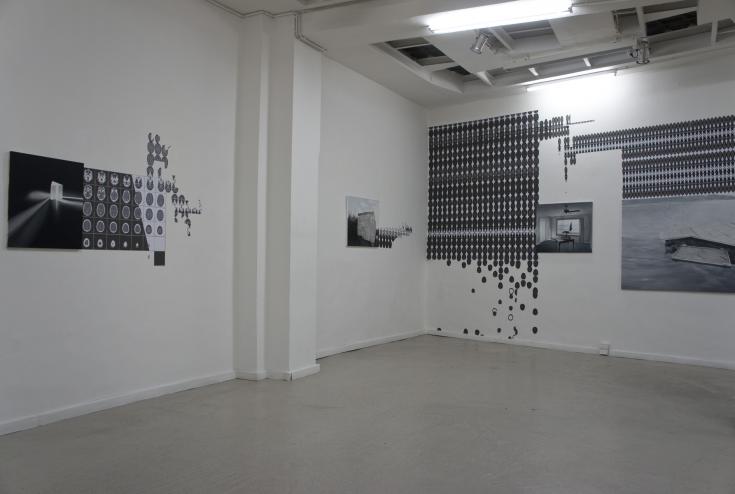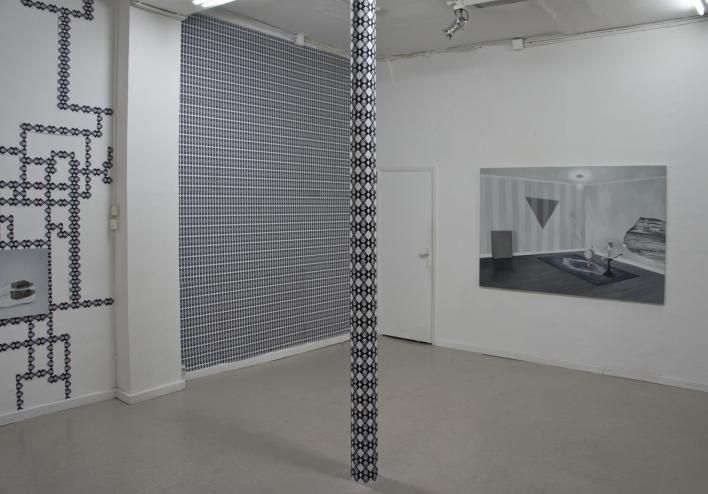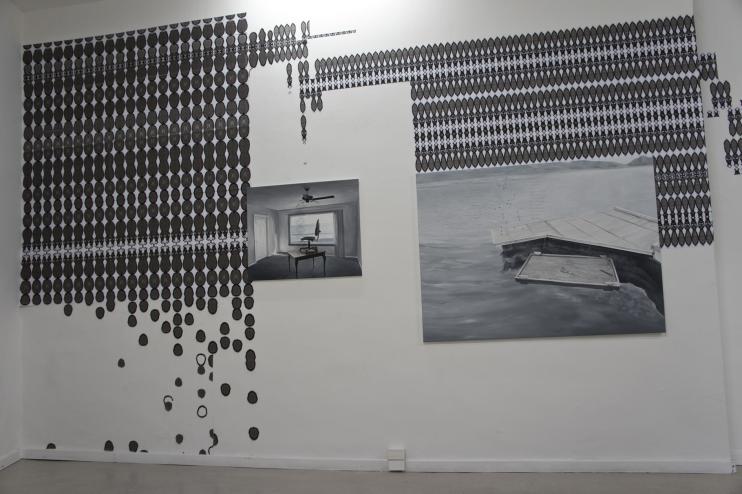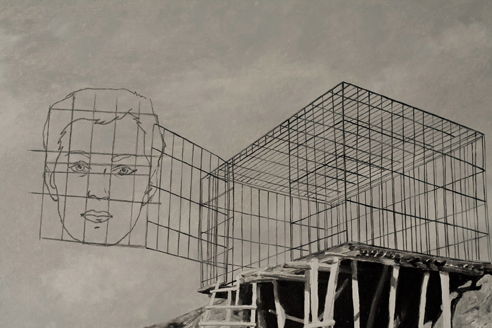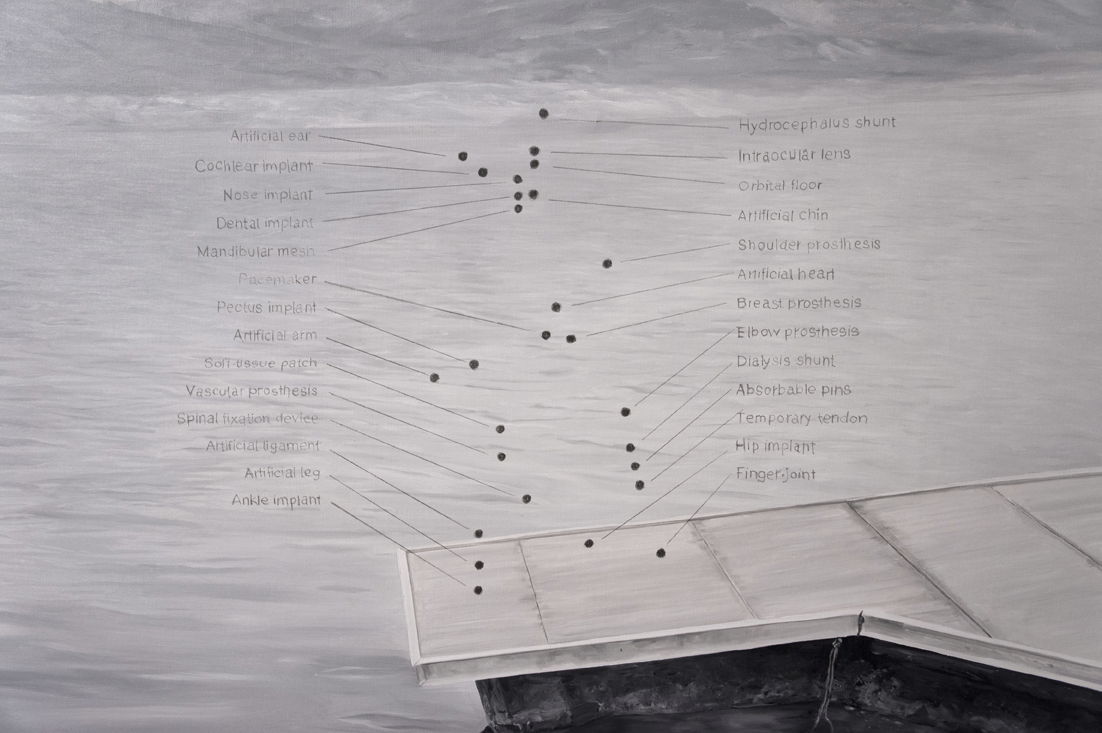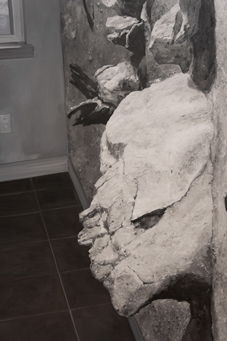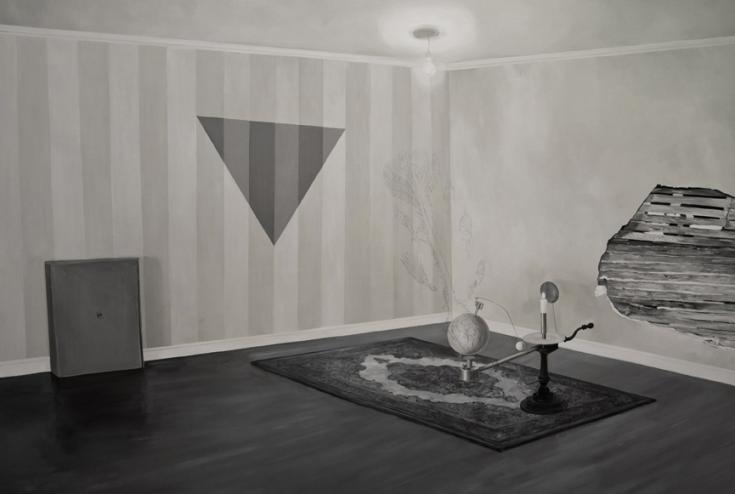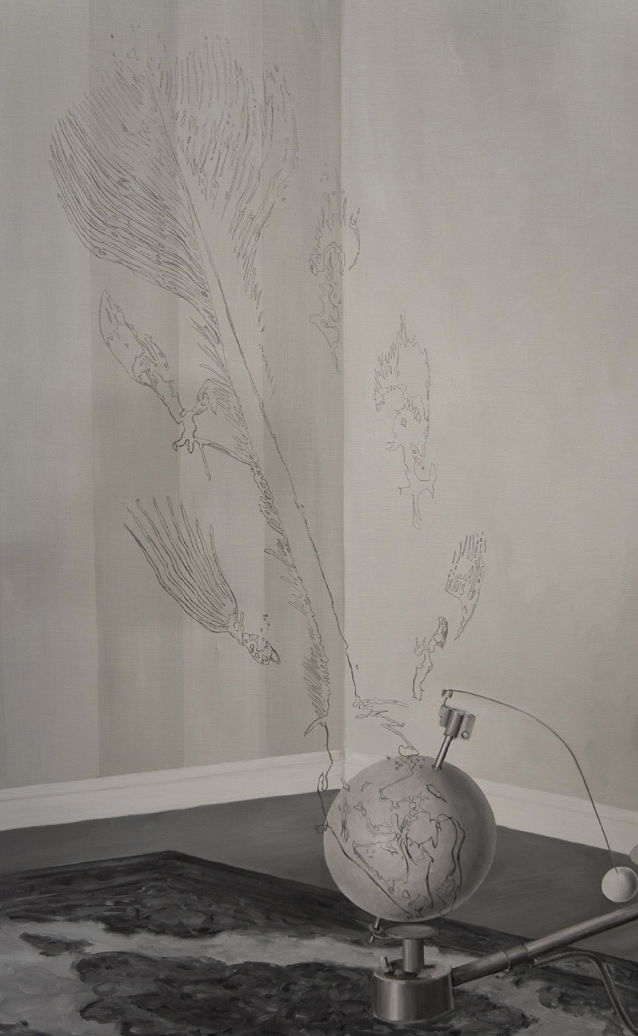Past
Geometry of Human Nature
Curator : Maria Rus Bojan
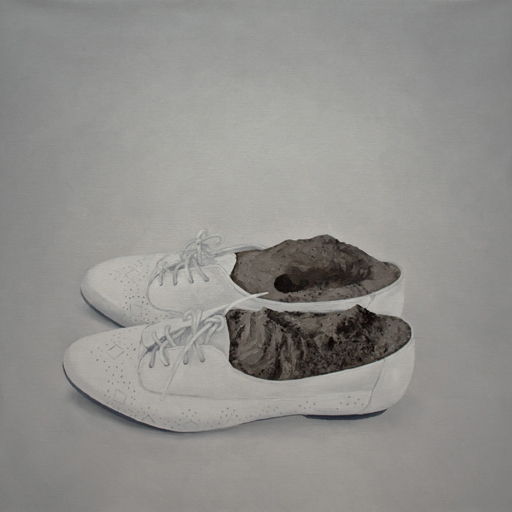
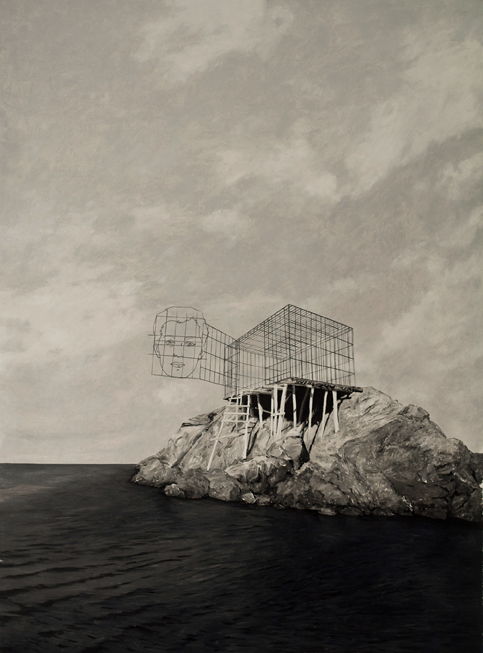
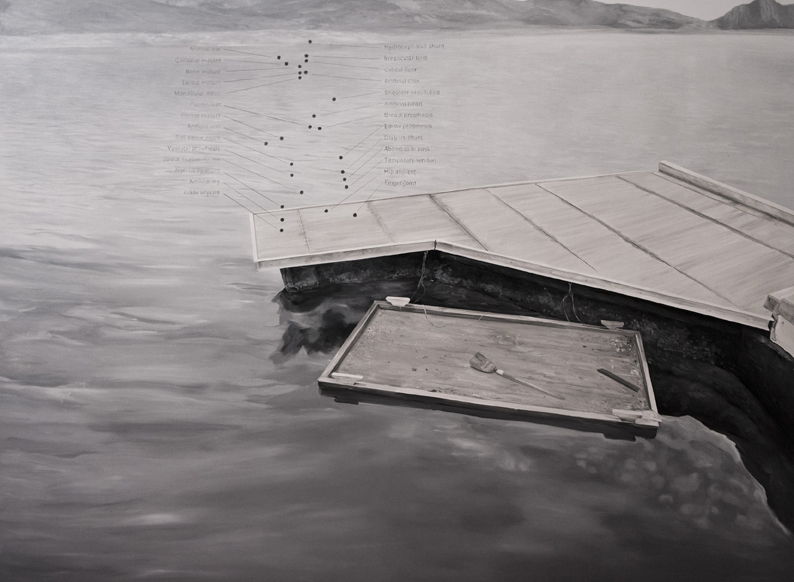
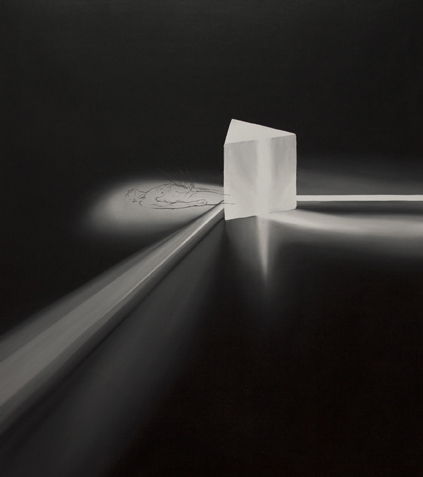
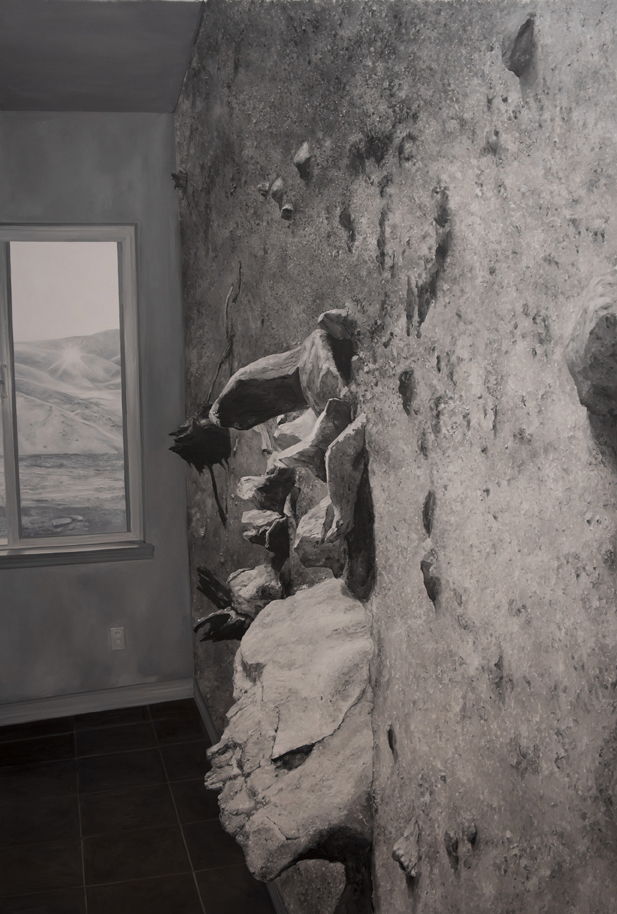
Press release
A graduate of the Art and Design University of Cluj-Napoca?s painting department, Catalin Petrisor proposes an absurd discourse reflecting on the contradictory dynamics of the Romanian post-communist society.
With this new assemblage of surrealist paintings algorithmically displayed on variable wallpapers, Catalin Petrisor seeks to articulate a visual dialectic that can emphasize the structural relationships between human creation and the harmoniously ordered totality of the universe.
Weaving multiple references to science, art history, and mathematics into a complex web of meanings, this anarchetypal installation challenges the notion of reflection on modern man?s need for a more harmonious and wholehearted approach to life, an approach based on the assumption that the universe functions according to a specific order that is infinitely reproduced through similar orders at all levels of the living world.
The visual leitmotiv of this exhibition is the picture of a traumatic brain injury depicted by a computer scan that appears on the wallpapers in several permutations, partially covering the gallery?s walls.
The use of a transversal section through the brain and its obsessive repetition, which empties and reduces the image to a formal pattern that composes a decorative frieze, indicates the artist?s interest in exhausting all the meanings of this conceptual element.
Through this visual strategy, Petrisor plays both with the literal meaning of these images (referring to the generalized state of distorted perception of the person who suffered the injury) and also with the symbolism of Vanitas, which in Latin means «emptiness», corresponding to the meaninglessness of earthly life and the transient nature of all earthly goods and pursuits. Yet from a conceptual perspective within the general setting of the installation, the wallpapers?main function is to activate paintings? meanings, opening up the process of signification.
The selection of paintings follows several themes that have recurred in the artist?s most recent years of practice. Post-utopian landscapes and desolated interiors, ruins of unfinished constructions, and hybrid spaces resulting from several juxtapositions of images : these are all completed by imperceptible drawings that are meant to upset the primary meanings, thereby offering the key to comprehending the entire composition.
The combination of realistic images structured on several layers and these almost invisible graphite drawings -- all within the same picture -- produce a tension that potentiates the meanings and increases the general sense of the surreal. The desired effect is to read the painting as the photograph of a stage decor in which a collage of different realities is mirrored in a misleading manner.
In particular, the restrained use of a black and white palette, mixed ocassionally with colored grey tones obtained from various mixtures of primary colors, accentuates the artist?s willfully non-aesthetic approach.
This process of reducing the means of painting to a minimum, the controlled de-skilling in tackling the realist expression, as well as the manner of conceiving the exhibition as one single work, together indicate a post-conceptual attitude that singles Petrisor out from his generation?s contemporaries, as well as from the figurative tradition of the Cluj School of Painting.
?Geometry of Human Nature? confirms the artist?s propensity for an expression that is uncanny from all perspectives, and that manages to create clusters of associations and imaginative worlds beyond any familiar experience.

